
Mantua is a city and comune in Lombardy, Italy, and capital of the province of the same name.

Ludovico III Gonzaga of Mantua, also spelled Lodovico was the ruler of the Italian city of Mantua from 1444 to his death in 1478.

Francesco Albani or Albano was an Italian Baroque painter who was active in Bologna (1591–1600), Rome (1600–1609), Bologna (1609), Viterbo (1609–1610), Bologna (1610), Rome (1610–1617), Bologna (1618–1660), Mantova (1621–1622), Roma (1623–1625) and Florence (1633).

Giovanni Paolo Colonna was an Italian composer, teacher, organist and organ builder. In addition to being chapel-master and organist of San Petronio Basilica in Bologna, he served prominent members of the courts of Ferrara, Parma, Modena and Florence. He was a founder-member and president of the Accademia Filarmonica di Bologna. Emperor Leopold I collected manuscripts of his sacred music, which reflects the Roman church cantata style of Giacomo Carissimi and looks forward to the manner of George Frideric Handel.
Carlo I Malatesta was an Italian condottiero during the Wars in Lombardy and lord of Rimini, Fano, Cesena and Pesaro. He was a member of the powerful House of Malatesta. Carlo's wife was Elisabetta Gonzaga; they were married in November 1386. Francesco I Gonzaga married Carlo's sister Margherita Malatesta in 1393, cementing ties between the families. Carlo was the brother of Pandolfo III and Andrea Malatesta, with whom he fought in numerous occasions.
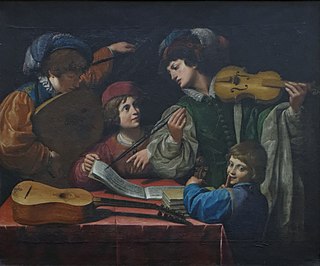
Leonello Spada was an Italian painter of the Baroque period, active in Rome and his native city of Bologna, where he became known as one of the followers of Caravaggio.

Carlo Cesare Malvasia (1616–1693) was an Italian scholar and art historian from Bologna, best known for his biographies of Baroque artists titled Felsina pittrice, published in 1678.
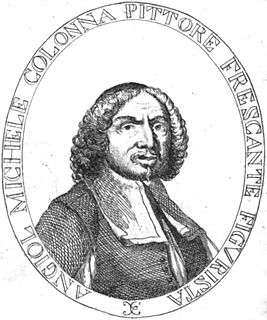
Angelo Michele Colonna was an Italian painter of the Baroque period, active in Bologna, northern and central Italy and Spain. He is sometimes referred to as Michelangelo Colonna.
Girolamo Curti (1575–1632) was an Italian painter of the early-Baroque, specializing in quadratura.

Agostino Mitelli was an Italian painter of the Baroque period and best known as a fresco painter of quadratura or illusionistic perspectival architectural frameworks.
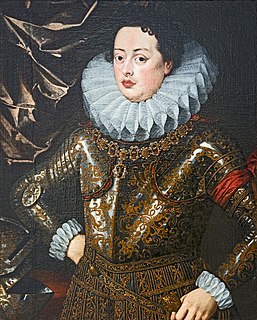
Francesco IV Gonzaga, was Duke of Mantua and Duke of Montferrat between 9 February and 22 December 1612.

Ferrante I Gonzaga was an Italian condottiero, a member of the House of Gonzaga and the founder of the branch of the Gonzaga of Guastalla.

Antonio Randa was an Italian painter of the classicist period, active in Ferrara, Modena, Rovigo, Florence, Comacchio and his native Bologna.
Andrea Malatesta was an Italian condottiero, a member of the Malatesta family of Romagna. He is also known as Malatesta da Cesena, a city he had inherited in 1385 from his father, Galeotto, together with Cervia and Bertinoro. In 1388 he was also recognized lord of Fossombrone.

Cesare Rinaldi was one of Bologna's most eminent poets. His verse was set to music as madrigals by Salamone Rossi and the circle of the Gonzaga Court at Mantua. He also wrote verse praising composers, such as Alessandro Striggio. During his entire life Rinaldi intertwined his work as a poet with the frequentation of painters and intellectuals: he was friend of the Carraccis and Guido Reni and close to Lavinia Fontana, Giovanni Valesio and other contemporary artists.

Francesco Gonzaga was an Italian bishop and a Cardinal of the Roman Catholic Church during the reigns of Popes Pius II, Paul II and Sixtus IV.

Frans Geffels, known in Italy as Francesco Geffels was a Flemish painter, printmaker, architect, stage designer and designer of ephemeral structures for solemn and festive occasions. After training in his native Antwerp, he was mainly active in Mantua, where he was prefetto delle fabbriche to the Duke, a role that gave him the direction of the artistic and construction activities undertaken by the Ducal court. He worked also on projects for the local aristocratic class of Mantua. In addition, he completed projects for the Liechtenstein princes and for the imperial court in Vienna.
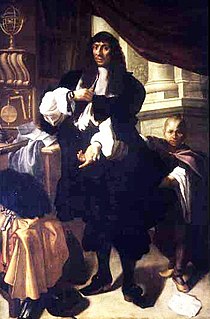
Cornelio Malvasia, Marquis di Bismantova was an Italian aristocrat, patron of astronomy and military leader.
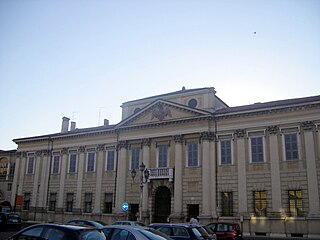
The Palazzo D'Arco is a Neoclassical-style palace located on Piazza Carlo D'Arco #4 in Mantua, region of Lombardy, Italy. The palace houses the Museo di Palazzo d'Arco, which displays the furnishings and artwork collected by the Duke D'Arco.

The Basilika Palatina di Santa Barbara is the Palatine Chapel of the House of Gonzaga in Mantua, Italy.

















